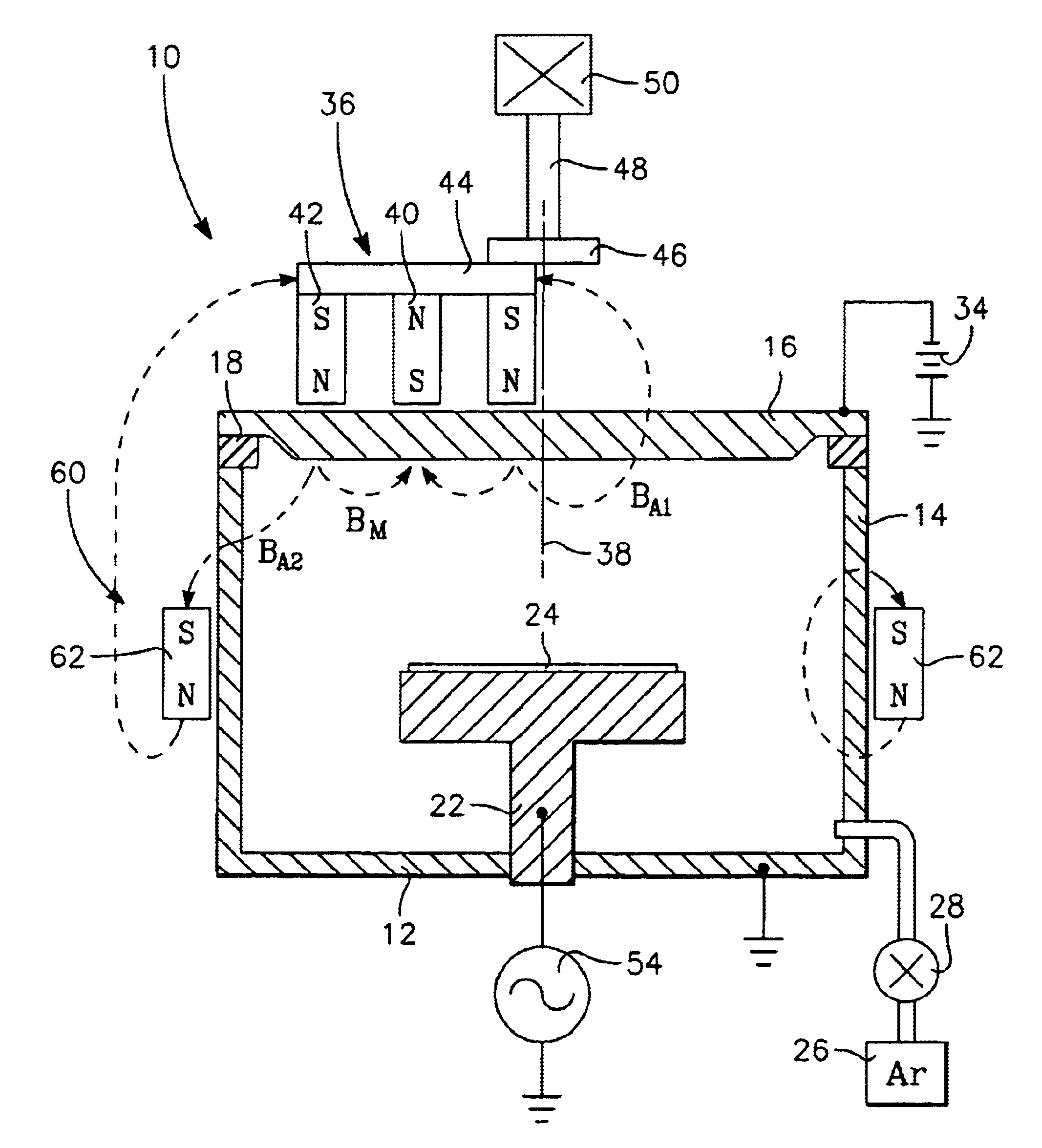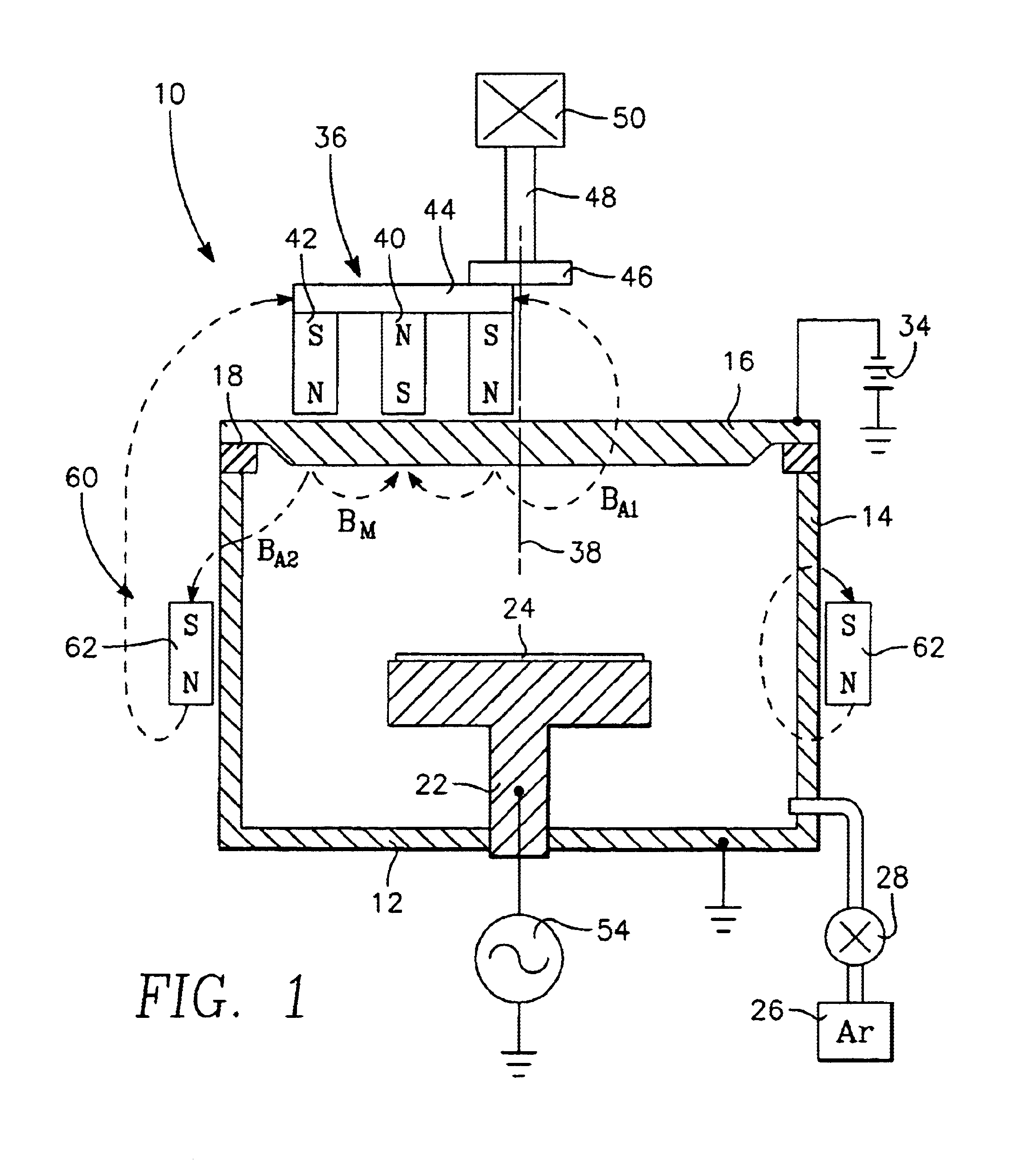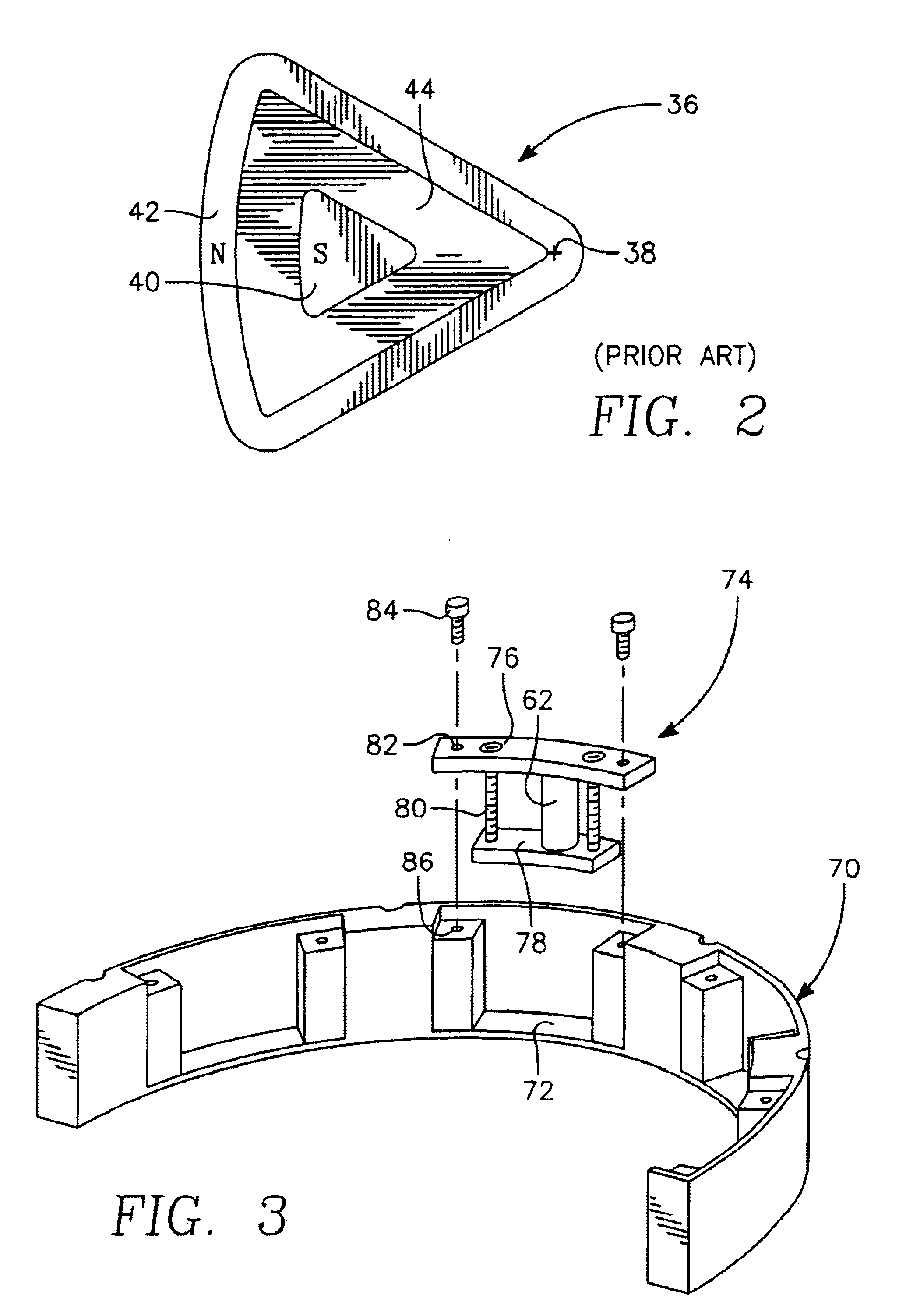Auxiliary magnet array in conjunction with magnetron sputtering
- Summary
- Abstract
- Description
- Claims
- Application Information
AI Technical Summary
Benefits of technology
Problems solved by technology
Method used
Image
Examples
first embodiment
a plasma sputtering reactor 10 of the invention is illustrated in the schematic cross-section view of FIG. 1. A vacuum chamber 12 includes generally cylindrical sidewalls 14, which are electrically grounded. Typically, unillustrated grounded replaceable shields are located inside the sidewalls 14 to protect them from being sputter coated, but they act as chamber sidewalls except for holding a vacuum. A sputtering target 16 composed of the metal to be sputtered is sealed to the chamber 12 through an electrical isolator 18. A pedestal electrode 22 supports a wafer 24 to be sputter coated in parallel opposition to the target 16. A processing space is defined between the target 16 and the wafer 24 inside of the shields.
A sputtering working gas, preferably argon, is metered into the chamber from a gas supply 26 through a mass flow controller 28. An unillustrated vacuum pumping system maintains the interior of the chamber 12 at a very low base pressure of typically 10−8 Torr or less. Duri...
PUM
| Property | Measurement | Unit |
|---|---|---|
| Fraction | aaaaa | aaaaa |
| Power | aaaaa | aaaaa |
| Polarity | aaaaa | aaaaa |
Abstract
Description
Claims
Application Information
 Login to View More
Login to View More - R&D
- Intellectual Property
- Life Sciences
- Materials
- Tech Scout
- Unparalleled Data Quality
- Higher Quality Content
- 60% Fewer Hallucinations
Browse by: Latest US Patents, China's latest patents, Technical Efficacy Thesaurus, Application Domain, Technology Topic, Popular Technical Reports.
© 2025 PatSnap. All rights reserved.Legal|Privacy policy|Modern Slavery Act Transparency Statement|Sitemap|About US| Contact US: help@patsnap.com



